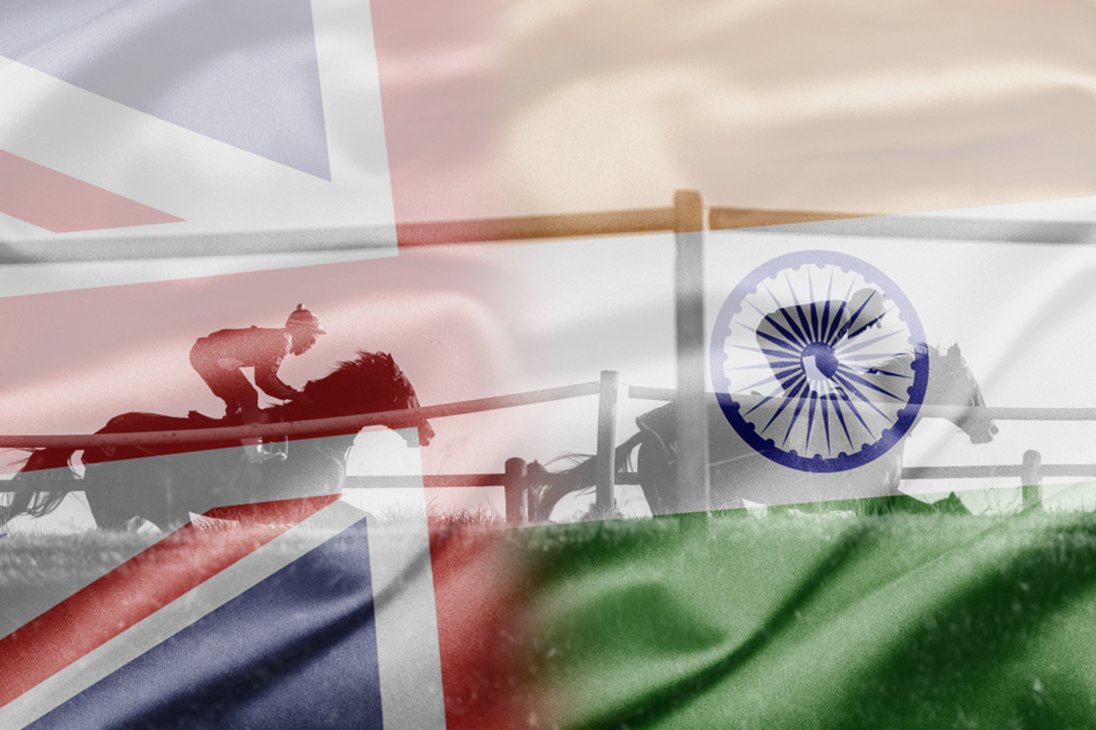India's economy surpasses that of the UK for the first time in 150 years
All of the territories and properties belonging to the East India Company were transferred to the British Crown in 1858 and the Crown went on to take political and administrative control of India for the next 90 years, rapidly accelerating the pace of economic growth on the subcontinent as it set out to demonstrate that whatever the East India Company might have done, it could do better; which, on the whole, it could. Major public works programmes proliferated up and down the country; and given it was easier for the Imperial Government to secure loans for large capital projects, it wasn’t slow to flex its economic muscles, combined as they now were with full policy making powers across all of India.
And in the intervening years since 1858 India, with more than two hundred times the population of its former mother country, has never in a single year recorded a higher domestic economic output than Britain.
Not, that is, until now.
Forbes Magazine reported last month that India has now become the Fifth Biggest Economy in the World, after the United States, China, Japan and Germany and with a well-modulated sense of understatement, the Minister of State for Home Affairs, Kiren Rijiju, described the historic moment as “a big leap”.
It is indeed a big leap, but it is also part of an even more historic trend.
India had been expected for some years to leapfrog Britain into fifth place in the world economic league, but most analysts including the highly influential Centre for Economics and Business Research (CEBR), had expected it to have to wait until 2020 before crossing the crucial threshold. And it’s worth reflecting on that fact for a moment: because a full three years ahead of projections, India has moved into fifth place on the Global Stage with its economy still forecast to grow at a consistent six to eight per cent per annum (compared, for example, with the United Kingdom’s one to two per cent); so where will India be in three years’ time?
There is a virtuous circle at the heart of all economic forecasting: growth breeds confidence and confidence breeds growth, and India now finds itself sitting at the heart of an unprecedented expansion in its domestic infrastructure programmes. As we have commented before on this site, the Indian Government has been launching project after project, committing dizzying sums to new transport, energy and capital developments which must surely by now have convinced even the most hardened economic sceptic that it has the firm resolve to follow through and build on these historic trends. Is it any wonder that the first Trade Mission of the newly established Government of Prime Minister Theresa May headed straight for India? Is it any wonder that the Trump Corporation sees India as its most fertile market for growth? And is it any surprise that London’s Capital Markets have been geared up specifically to support the most ambitious of India’s expansion plans?
Less than two weeks ago we heard that IL&FS Engineering and Construction (IL&FS) had been awarded a new Rs 242.2 crore contract by the Government of Karnataka for the widening from two to four lanes of the highway between Bidar and Humnabad, expected to be completed in two years’ time; and IL&FS is already working on a major project in Karnataka for the Bangalore Metro Rail Corporation which is worth no less than Rs 326.99 crore. These and projects just like them, already taking place up and down the subcontinent, are the key drivers for future economic growth in India.
In his short, eventful lifetime Robert Clive came to dominate the extraordinary economic creature which was the East India Company; and when he was called to give evidence before the British House of Commons to deal with widespread allegations of embezzlement and appropriation which were dogging the company he said candidly that given India’s great wealth it was a wonder only that more wasn’t stolen. We’ve come a long way since then. India is finally taking its place at the top table of global economies, standing on its own two feet and marshalling its huge resources for itself. Who knows what the future holds?
Red Ribbon CEO, Suchit Punnose said:
There can be no doubting the historic significance of India leapfrogging Great Britain so as to secure 5th place in the global economic tables; indeed, when set in its full economic context it is likely to be a truly game-changing moment for the subcontinent. But for my part I am not surprised: as the article points out, economic growth is all about confidence and confidence will, in turn, engender further growth; and India has certainly not been short of confidence over recent years. Just look at the scale of its infrastructure programmes which at times have been simply breathtaking in their scope.
Britain turned India into an imperial powerhouse through investing in what we would now call public infrastructure projects. One hundred and fifty years later, India under its own steam and fuelled by its own ambitions is set to match the ambition of its former colonial mother country; so it seems appropriate that it should now be taking its place at the top economic table.






Leave a Reply